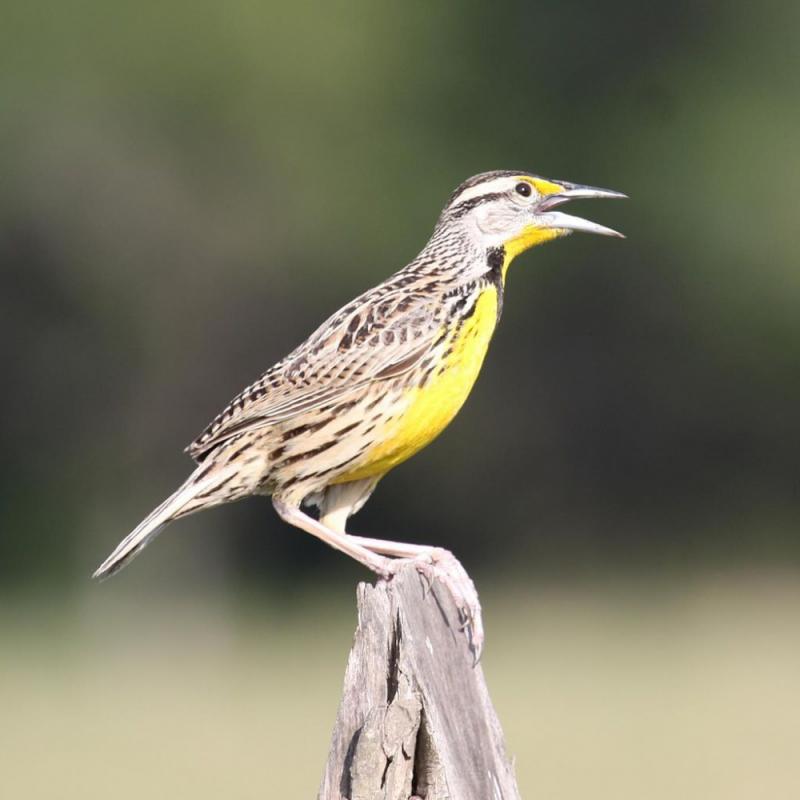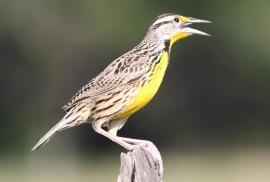Guide to Boreal Birds
Overview
One of the best-known birds of American farmlands, the Eastern Meadowlark usually delivers its bright song from a conspicuous perch. The Eastern and Western meadowlarks are so similar that at a distance only their songs and calls distinguish them. Moreover, the two may even learn each other's song where their ranges overlap. Meadowlarks are often polygamous; more than one female may be found nesting in the territory of a single male. Because the birds often breed in hay fields, their nests may be destroyed by mowing; unless the season is well advanced, they normally nest again. During migration and winter Eastern Meadowlarks band together in groups of up to a dozen birds and can be found in almost any open grassy area. In flight they keep their wings stiff, typically fluttering them a few times and then sailing.
Description
9-11" (23-28 cm). Robin-sized. A stocky, brown-streaked bird with white-edged tail; bright yellow throat and breast, black V crossing breast. Western Meadowlark is very similar, but paler above, yellow of throat extends onto cheeks; best distinguished by voice.
Voice
Clear, mellow whistle, see-you, see-yeeeer; also a loud rattling alarm note.
Nesting
3-7 white eggs, spotted with brown and dull lavender, in a partly domed structure of grass concealed in a depression in a meadow.
Habitat
Meadows, pastures, and prairies; generally in open country during migration.
Range/Migration
Breeds from southeastern Canada south throughout eastern United States, west to Nebraska, Texas, and Arizona. Winters in most of breeding range.



